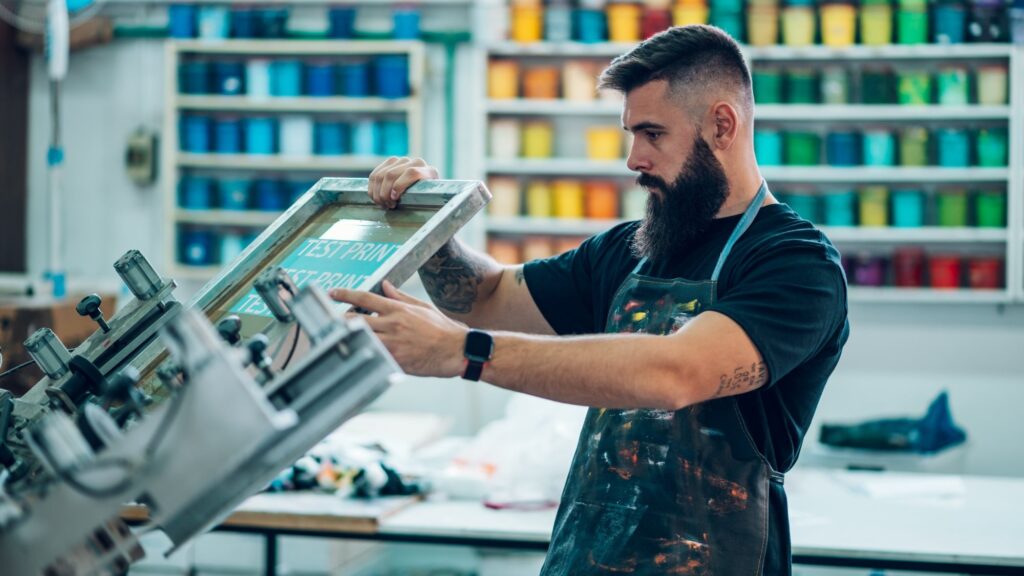“Ink is cheap. Setup is not.”
That line from an old shop foreman still rings true. Finding the right t‑shirt printing method is mostly about setup cost, color limits, and fabric choice. In this guide I compare Direct‑to‑Film (DTF), Direct‑to‑Garment (DTG), and Screen Printing.
Screen printing
Screen printing uses a mesh stencil. Ink pushes through the mesh and lands on the shirt. You repeat this for each color, then cure the print under heat.
Pros
- Very durable; a good plastisol print survives years of washing.
- Bold, opaque color even on dark fabric.
- Fast once the press is set up; automatic presses fly through bulk orders.
- Low unit cost at scale; screens cost the same whether you print ten shirts or ten thousand.
Cons
- High setup time and cost because you need one screen for each color.
- Photographic detail is harder; halftones help but add work.
- Small runs stay expensive.
- Cleanup is messy and uses water and chemicals.
Where it fits
Bulk runs—concert merch, team uniforms, corporate giveaways—especially when the art uses just a few spot colors and must survive hard wear.
Direct-to-garment (DTG)
DTG is basically an inkjet printer for shirts. The head sprays water-based CMYK and white ink straight into pre-treated cotton. You then cure the garment under heat.
Pros
- Unlimited colors and smooth gradients in one pass.
- True one-off capability. Print a single shirt and still make money.
- Very soft hand; the ink sits inside the fibers.
- Low waste because the printer fires ink only where the art exists.
Cons
- Dark shirts need pretreat; skip a spot and the design can wash out. A bad spray can leave a visible halo.
- Slower than screen printing on big runs.
- White-ink lines need daily maintenance or they clog.
- Works best on cotton; synthetics can look dull.
Where it fits
Small batches, photo prints, and print-on-demand web stores. Fashion brands love DTG for soft vintage looks.
Direct-to-film (DTF)
DTF prints your design onto PET film with the same CMYK + white head found in many DTG machines. While the ink is wet, you add a hot-melt powder to the back. The film runs through a dryer, fusing the powder. You then press the film onto the garment and peel it away; only the ink layer sticks.
Pros
- Works on almost any fabric: cotton, polyester, blends, nylon, even leather.
- No garment pretreat; the powder does the bonding.
- Bright, opaque color on dark garments.
- You can print transfers today, stack them, and press them months later.
- Roll-fed DTF printers with shakers reach mid-volume speeds that beat DTG.
Cons
- Thicker feel than DTG. Some customers notice a “patch.”
- Film, powder, and white ink add consumable cost.
- You juggle print settings, powder levels, and dryer heat.
- Needs a quality heat press; uneven pressure ruins edges.
Where it fits
Mixed-material jobs—cotton tees plus poly hoodies—runs under 300 pieces with many colors, and shops that like stocking transfers instead of finished garments.
Pros and cons side by side
| Factor | Screen printing | DTG | DTF |
|---|---|---|---|
| Setup cost | High per color | Very low | Low |
| Color limit | 6–8 practical | Unlimited | Unlimited |
| Best fabrics | Any, but loves cotton | Cotton | Almost anything |
| Hand feel | Medium | Soft | Thick |
| Durability | Excellent | Good | Very good |
| Speed at 500 pcs | Fastest | Slow | Moderate |
| One-off cost | High | Low | Low |
| Maintenance | Screens, chemicals | Daily head clean | Head + powder upkeep |
When to choose each method
Bulk event shirts
Need 1,000 two-color tees for a festival? Screen printing wins. Unit cost dives once setup spreads across that many shirts and the prints last.
Web store with dozens of SKUs
Orders come in one at a time. Each design is full color. DTG shines because you swap art with a click, and customers get soft, photo-quality prints.
Small but varied corporate kit
Twenty cotton polos, twenty poly hoodies, and ten nylon jackets all need a full-color logo. DTF is simplest. One film sticks to every fabric, no pretreat, no color limits.
Fashion brand chasing hand feel
Want a washed-out vintage vibe on ringspun cotton? DTG with water-based ink feels almost like nothing is on the shirt.
Pop-up event with uncertain demand
You can gang-print DTF transfers in advance, press them as sizes sell, and carry home zero dead inventory.
Tight budget but big logo
Screen printing two spot colors on 300 shirts often beats DTF or DTG on total bill, even after you count screen charges.
A quick shop workflow tip
Many print shops now keep all three methods. They screen print bulk jobs, run DTG for one-offs, and lean on DTF for odd fabrics and mid-size runs. That mix lets the shop quote almost any job without saying “no.”
Conclusion
Screen printing, DTG, and DTF all put ink on fabric, but each solves a different problem:
- Screen printing rules bulk and durability.
- DTG nails small runs with soft photo prints on cotton.
- DTF bridges the gap, handling many fabrics and mid-size orders with bright color.
Match the method to the order, not the other way around. If you run a shop, keep at least one digital option next to your press. If you’re ordering shirts, ask the decorator which method best fits your art, fabric, and budget. Clear expectations up front save headaches later.

